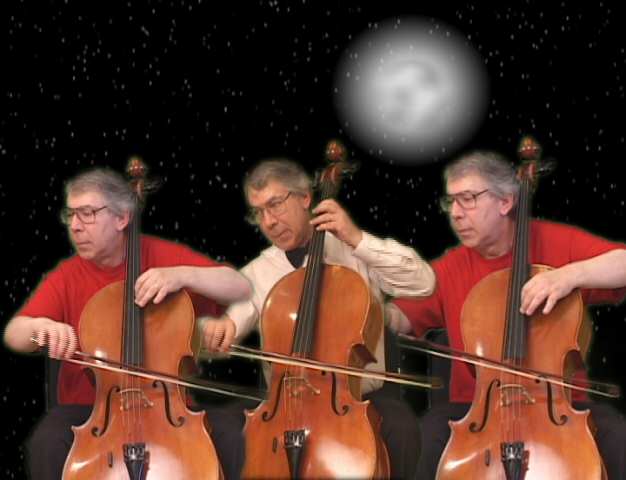 |
| www.ethanwiner.com - since 1997 |
Gaining an Edge - with
Subtle Distortion
An audio purist tentatively embraces the dark side.
by Ethan Winer
This article first appeared in the February 2006 issue of Sound On Sound magazine.
|
I've always considered myself an audio purist. Many years ago I owned a professional recording studio, and I hated the slight grunge added to every track by our 2-inch MCI recorder. In those days 16 track was considered state of the art, so large productions often required bouncing sub-mixes, which of course gave more distortion. The final mixdown to quarter-inch tape added yet more distortion, which could be exchanged for tape hiss by recording at low levels. The main problem with tape is not so much the added harmonics but IM distortion, which adds musically unrelated content. When digital recording on home computers became practical in the mid-1990s, I was ecstatic. Finally I could have nearly limitless tracks with low noise and, even better, low distortion.
Since digital audio has become mainstream, I've seen people complain that the sound is sterile and lifeless - perhaps too clean - but I always attributed that to a misguided fixation with the past. Indeed, as a purist I prefer that my signal chain and recording medium be as transparent as possible; I can always add coloration manually if needed. While I still feel that a recording medium should be free of artifacts, a few events over the years have changed my thinking.
My first experience with the benefit of subtle distortion was unintentional. Years ago I did a mix in my DAW and made a cassette copy for a friend. I noticed the cassette sounded better - more "cohesive" for lack of a better word - and I liked the effect. A few times I even copied a cassette back into the computer, used a noise reducer program to remove the hiss, then put the result onto a CD. I knew it was an effect, not higher fidelity or the superiority of analog tape, but I had to admit I liked the effect. I also tried an early tape simulation plug-in and liked that too. And I didn't have to clean up the hiss.
Although my purist attitude kept me from embracing the concept fully, in the back of my mind I always remembered the "improvement" from those cassette and tape simulator experiments. I've mentioned this in audio forums, when dismissing those who say analog recording is better than digital, to concede that the effect can be useful. But it's an effect and not higher fidelity. Now fast forward to the present, where I'm trying to create a good sounding mix from a very difficult group of tracks.
My current project is a pop tune I wrote comprising 37 cello parts and nothing else. I pounded the cello body with my fist for a kick drum; stroked the front and scratched the strings for sounds like a brushed snare; tapped and poked it with pencils; and, of course, there's plenty of traditional bowed and pizzicato playing. But trying to get a good sounding mix from so many tracks of the same physical instrument presented a huge challenge. I even hired a local pro to come by and offer his advice, and I bought Charles Dye's Mix It Like a Record DVD mixing course (LINK) hoping for some useful hints. That's when I struck pay dirt. After hearing what great results Charles had using valve and tape simulator plug-ins on every track and on the mix bus, I tried Cakewalk's tape simulator plug-in on the stereo bus in SONAR for my tune. Bingo! Now it sounds, as Charles Dye would say, "like a record."
To be perfectly clear, I'm not talking about "lo-fi" productions popular these days, or using large amounts of distortion as an obvious effect. Nor can distortion substitute for good mixing practice like overall thinning, brightening, and reducing offending resonant frequencies with EQ. But the addition of subtle distortion can add the final touch to an otherwise solid but lackluster mix. Again, it's important for the "toobs rule" and "analog forever" folks to understand that this is just an effect. I'm still not convinced that one has to pay handsomely for boutique outboard analog gear when the goal is simply to add a little grit to a track or mix. There are many ways to add coloration and "warmth" using tools you may already own.
For example, "aggressive" compression seems to be a holy grail among mix engineers, and that's another good way to add some useful coloration. You can get this effect with any reasonably flexible compressor - analog or plug-in - by simply setting both the attack and release times fast. I use an infinitely fast attack, and then shorten the release time to taste. As the release time is reduced low frequency distortion increases, adding a welcome touch of character to an instrument track or mix. When both times are set fast the compression begins to operate on individual cycles, which is more like clipping than compression. A similar effect is possible using volume maximizer plug-ins like Sony's Wave Hammer or Peak Slammer. These plug-ins reduce the level of individual cycles letting you increase the overall volume of a mix without adding compression artifacts. But when pushed harder than intended they can add a very desirable edge to the sound.
Ethan Winer designs acoustic treatment for RealTraps in the US. You can hear his mix of 37 cellos - with tape simulation - at www.ethanwiner.com/cellorondo.html.
Entire contents of this web site Copyright © 1997- by Ethan Winer. All rights reserved.